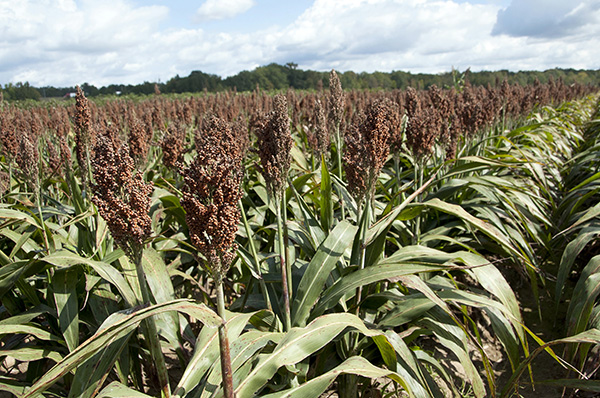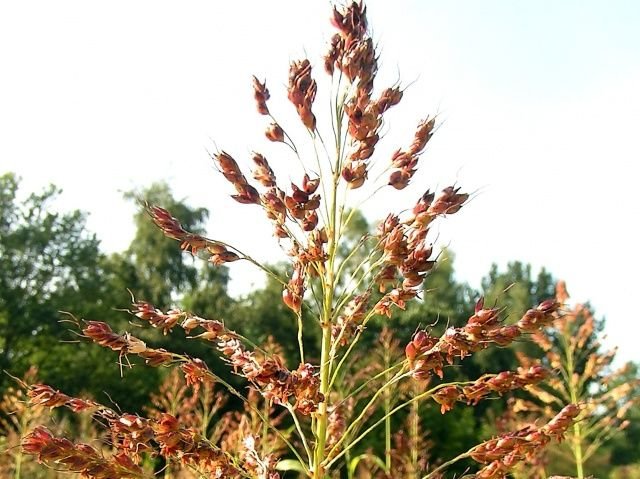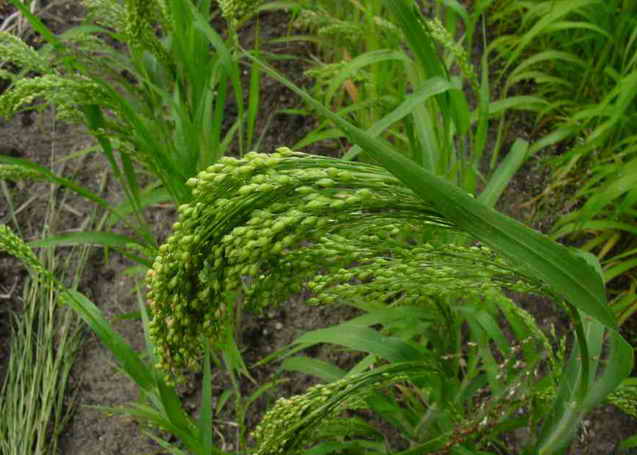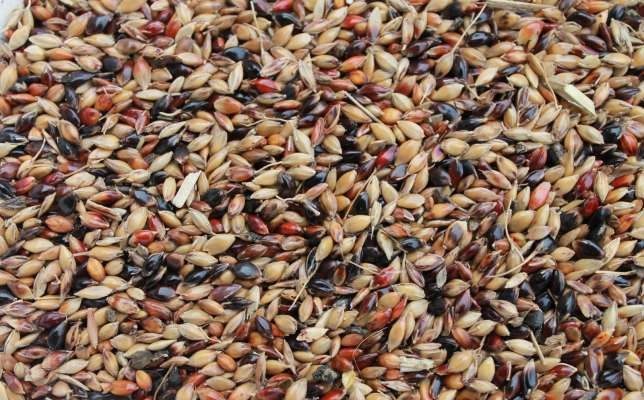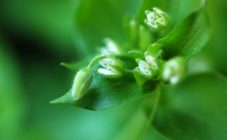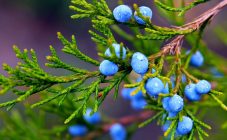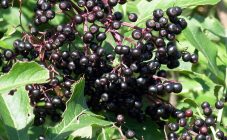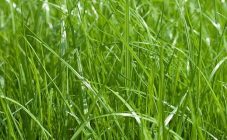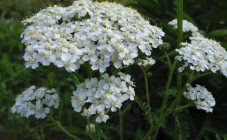Content:
The development of agriculture in Russia requires the introduction of new grain crops into the culture. One of them is the Sudanese grass, which in its nutritional properties is able to compare with the main plants from the Myatlikov family. Growing it requires certain knowledge and skills.
Sudanese grass: what is it
Sudanese grass (also known as Sudanese or Sudanese sorghum) is one of the varieties of the cultivated genus Sorghum, which belongs to the Grain family (Bluegrass). The species under consideration includes mainly herbaceous annual plants. The plant grows in the form of a bush, the height of which varies from 50 cm to 3 meters. The stems of the plant are erect, densely leafy; under favorable conditions, the number of stems reaches 120.
According to the description, the foliage has a light greenish color, smoothed, lanceolate. The flowers of the plant are arranged in spreading panicle inflorescences, the height of which reaches 40 cm. The inflorescences are both drooping and erect. The fruit of the plant is a membrane weevil, which is covered from above with special spikelet scales.
The Sudanese herb is characterized by a strong and well-developed fibrous root system. Individual roots penetrate into the ground to a depth of one and a half meters. At the nodes of the stem located below, at a certain period, additional aerial roots begin to develop.
The top of each plant stem is crowned with three spikelets. Two of them are male and sterile, and the third is characterized by the presence of a bisexual flower and is capable of reproduction. The culture is cross-pollinated.
The natural habitat of the Sudanese grass is North Africa (Nile Valley). As a fodder plant Sudanka is cultivated in the zone of northern and eastern European countries, in Western Europe, Latin and North America, India, Australia, Kazakhstan. On the territory of Russia, cultivated plantations of Sudanese sorghum are found in the south and southeast of the European part of Russia, in the Altai Territory, in the regions of the Far East. Separate fields are planted with this grass in the regions of the Non-Black Earth Region and the Central Black Earth Region.
Varieties
Sudanka is a perennial herb that is used in breeding for the development of new varieties, but these studies are not conducted widely enough due to the lack of demand for the crop in question in comparison with other grain representatives of the Myatlikovye family. In this regard, the number of plant varieties is small, and the following are cultivated as the main varieties in Russia:
- Borskaya 2... The variety was bred on the basis of the All-Russian Research Institute of Beef Livestock (Orenburg) in the Oktyabrsky District at the Brody experimental field plot. The bush forms up to 6-7 leaves, 40-60 cm long and up to 2-4 cm wide. The panicle inflorescence is erect, spreading and spreading, in the phase of fruit ripening it slightly narrows in size. The length of the inflorescence varies at the level of 30 cm. The average bush of the variety includes about 35 branches. The weight of 1000 seeds ranges from 10-12 grams.The variety is characterized by increased disease resistance.
- Jubilee 20... The originator of this variety is the Saratovskoye Research and Production Association. The degree of bushiness of plants is medium. The panicle is spreading, made in a pyramidal shape. The seeds are covered with a transparent film. The variety belongs to the category of early maturing, since the period of the first cut occurs after 35-40 days from the moment of mass emergence of seedlings. Disease resistance is average.
- Chishminskaya early. The variety was bred on the basis of the Bashkir Research Institute of Agriculture. The stem of the plant is relatively thin, its height is at the level of 1 meter. After 40 days from the moment of germination, the plants become ready for the first cut, which makes it possible to classify the variety as an early maturing group. The variety is moderately resistant to diseases.
The listed varieties are characterized by a relatively high yield and good quality indicators. Nevertheless, scientific research in the field of Sudanese breeding continues, which resulted in the development of new hybrid varieties of this crop:
- Zonalskaya 6;
- Mironovskaya 10;
- Odessa 25;
- Chernomorka;
- Mironovsky 325;
- Kamyshensky 330;
- Innovator 151;
- Hercules3;
- Azimuth;
- Voronezh 1;
- Odessa 55 and pr.
Plant propagation
As with most grains, the common method of propagation for Sudanese grass is by sowing seeds. This method allows plants to transfer varietal traits to their offspring. Sowing is carried out mainly in the spring, when the soil warms up to approximately + 10 ... 12C. The sowing method differs depending on what the purpose of the harvest is.
If Sudanese grass is cultivated for seeds, wide-row crops are used, and when grown for hay, drill crops are used. The generally accepted depth of planting seeds is approximately 3-4 cm, however, on soils with a light composition, this indicator increases to 6-8 cm.In the zone of dried steppes, the seeding rate of Sudanese is 10-14 kg / ha, and in forest-steppe territories, where it falls annually by 500-600 mm of precipitation, this figure is 25-30 kg / ha.
When reproducing Sudanese sorghum, it can be sown together with leguminous crops. Most often, they practice the creation of joint plantings of Sudanese and soybeans. This method is more profitable from an economic point of view, since the seeding rate of the crop is reduced by approximately 15-20% compared to monospecific plantings. The only requirement in this case is the need for regular irrigation, which should not be excessive.
Sorghum Sudanese is not demanding on soils and is capable of cultivation on various types and categories of soils. It should not be planted only on acidified soils. The culture maintains the salt content in the soil at the level of 0.6-0.8%.
Properties of Sudanese grass
Under cultivated conditions, Sudanese grass is cultivated mainly as a fodder plant. Its widespread use is largely due to its following positive properties:
- good ability to shoot;
- increased productivity;
- drought resistance;
- fast re-regrowth after grazing or cutting;
- high feed and nutritional qualities and properties.
The plant is unpretentious to the cultivation conditions, since it is able to independently obtain the necessary nutrients and moisture for itself due to the powerful and deep-lying root system. The culture gives good yields when cultivated for green mass and hay. In the latter case, the productivity of Sudanese sorghum exceeds that of forage annual crops.
The nutritional value of Sudanese is higher compared to the same indicator in other cereals due to the increased content of the following substances:
- proteins (over 10%);
- proteins (more than 5%, more only in legumes);
- carbohydrates (65-70%);
- Sahara;
- carotene;
- cellulose.
The plant also contains a number of useful macro- and microelements:
- iron;
- magnesium;
- molybdenum;
- potassium;
- phosphorus;
- copper;
- zinc;
- manganese;
- selenium;
- calcium.
Sudanese woman can improve the health and well-being of livestock. This is due to the presence of the following vitamins in its composition:
- AND;
- IN 1;
- AT 2;
- AT 5;
- AT 6;
- H;
- PP.
Diseases and pests
The fight against diseases and harmful insects in Sudanese involves the use of special fungicides and insecticides, as well as strict observance of all requirements of the cultivation technology. The main ailments affecting the culture:
- varieties of smut;
- ascochitis;
- cercosporosis;
- helminthosporiosis (brown spot);
- nigrosporosis;
- red bacterial spot.
Among the pests for Sudanese grass, the most dangerous are:
- aphid;
- scoops;
- wireworms and false wires;
- corn (stem) moth.
Harvesting and storage of crops
Harvesting is carried out at the optimum time. The grain will not completely crumble, but its moisture may increase, which will require additional drying costs. When cultivated for silage, harvesting is carried out at the onset of the wax ripeness phase.
Drying is carried out in the same way as for all grain crops. The only difference is that the seed needs a weaker air flow. Storage is also carried out according to the generally accepted method for cereals. It is important to provide adequate ventilation of fresh air.
Sudanese grass is promising for cultivation in most regions of Russia. A minimum of agrotechnical costs will allow you to get high-quality and productive plantings that will be economically profitable.
